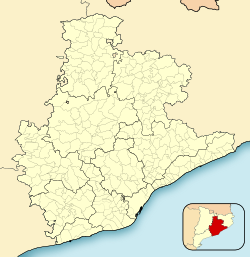Rocafort | |||||||||||
|---|---|---|---|---|---|---|---|---|---|---|---|
 The station's interior as seen from the platforms | |||||||||||
| General information | |||||||||||
| Location | Barcelona (Eixample) | ||||||||||
| Coordinates | 41°22′44″N2°9′16″E / 41.37889°N 2.15444°E | ||||||||||
| System | Barcelona Metro rapid transit station | ||||||||||
| Owned by | Transports Metropolitans de Barcelona | ||||||||||
| Platforms | 2 side platforms | ||||||||||
| Tracks | 2 | ||||||||||
| Construction | |||||||||||
| Structure type | Underground | ||||||||||
| Other information | |||||||||||
| Fare zone | 1 (ATM) | ||||||||||
| History | |||||||||||
| Opened | 1926 | ||||||||||
| Services | |||||||||||
| |||||||||||
| |||||||||||
Rocafort is a Barcelona Metro station, named after the Carrer de Rocafort , in the Eixample district of the city of Barcelona. The station is served by line L1. [1] [2]
Contents
The station is located under the Gran Via de les Corts Catalanes between the Carrer de Rocafort and the Carrer de Calàbria . The station can be accessed from entrances on the Gran Via, the Carrer de Rocafort and the Carrer de Calàbria. It has twin tracks, flanked by two 88-metre (289 ft) long side platforms. [1] [3]
Rocafort is on the original section of line L1 (then the Ferrocarril Metropolitano Transversal de Barcelona) between Catalunya and Bordeta stations, which was opened in 1926. [2] [3]



